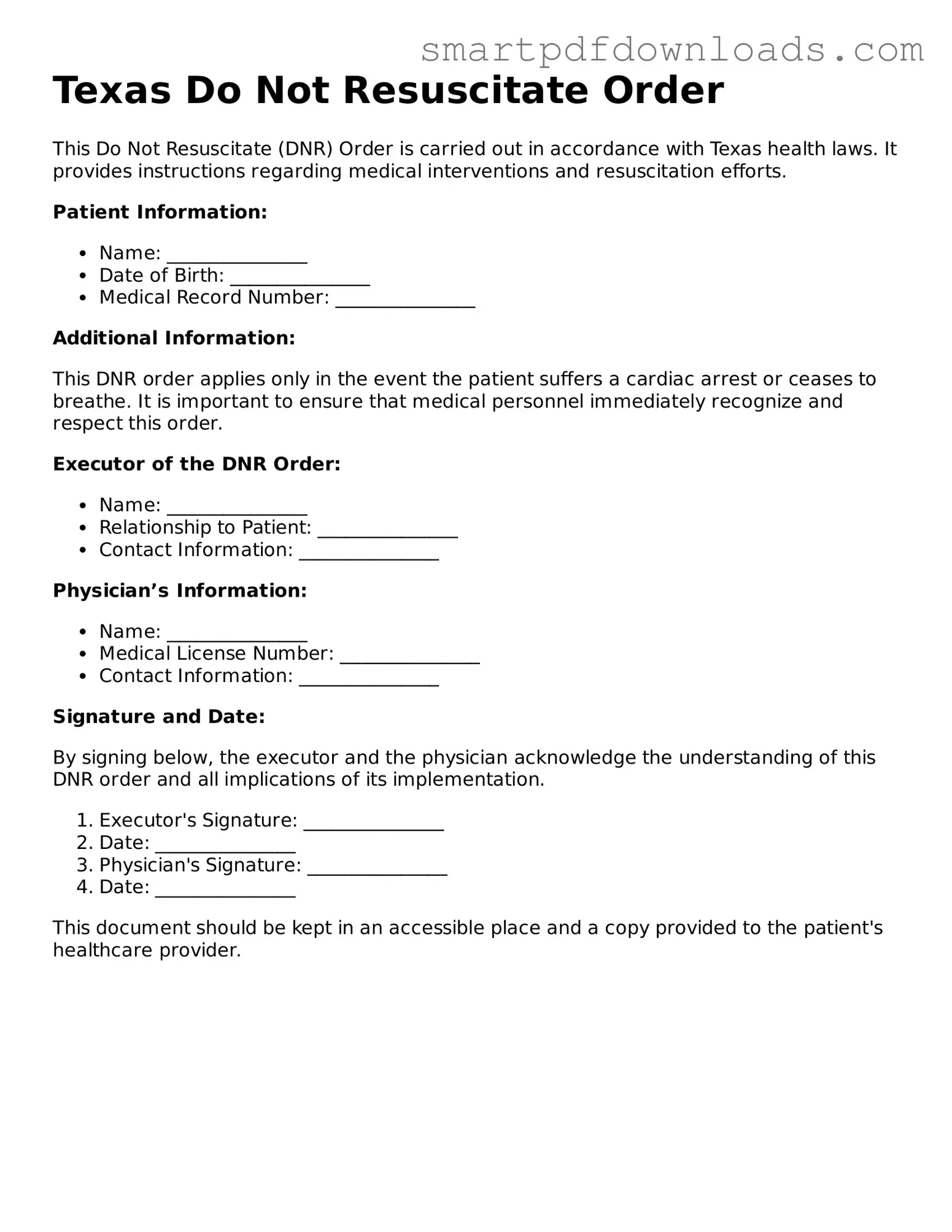Texas Do Not Resuscitate Order
This Do Not Resuscitate (DNR) Order is carried out in accordance with Texas health laws. It provides instructions regarding medical interventions and resuscitation efforts.
Patient Information:
- Name: _______________
- Date of Birth: _______________
- Medical Record Number: _______________
Additional Information:
This DNR order applies only in the event the patient suffers a cardiac arrest or ceases to breathe. It is important to ensure that medical personnel immediately recognize and respect this order.
Executor of the DNR Order:
- Name: _______________
- Relationship to Patient: _______________
- Contact Information: _______________
Physician’s Information:
- Name: _______________
- Medical License Number: _______________
- Contact Information: _______________
Signature and Date:
By signing below, the executor and the physician acknowledge the understanding of this DNR order and all implications of its implementation.
- Executor's Signature: _______________
- Date: _______________
- Physician's Signature: _______________
- Date: _______________
This document should be kept in an accessible place and a copy provided to the patient's healthcare provider.
